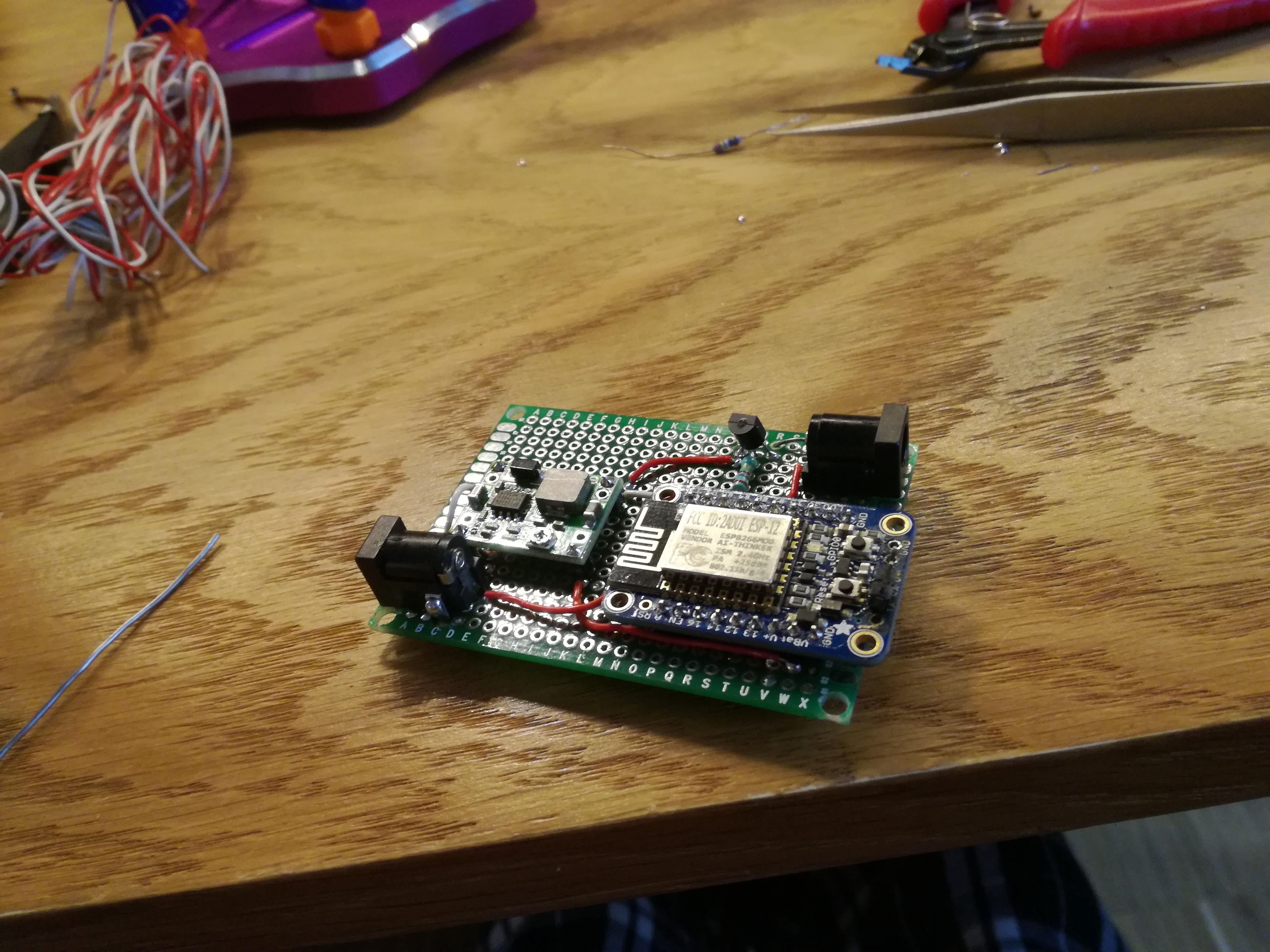To make the experience fit your profile, pick a username and tell us what interests you.
We found and based on your interests.
I am not really a fan of breadboards, but for a design so trviail I really didn't feel like spending time and money to produce PCB. I hooked up everything on my desk and got it running in no time. The whole thing should be enclosed anyways, so it doesn't matter if it's ugly or not.
I also did some power optimization. Instead of linear regulator I got $0.80 MP1484 step down module from e-bay. I felt kinda terrible to allow 12-5=7V drop across the poor component. With current bursts of up to 500mA, I can only imagine how short the linreg would survive. 
Complete code so far:
// Adafruit IO Digital Output Example
// Tutorial Link: https://learn.adafruit.com/adafruit-io-basics-digital-output
//
// Adafruit invests time and resources providing this open source code.
// Please support Adafruit and open source hardware by purchasing
// products from Adafruit!
//
// Written by Todd Treece for Adafruit Industries
// Copyright (c) 2016 Adafruit Industries
// Licensed under the MIT license.
//
// All text above must be included in any redistribution.
/************************** Configuration ***********************************/
// edit the config.h tab and enter your Adafruit IO credentials
// and any additional configuration needed for WiFi, cellular,
// or ethernet clients.
#include "config.h"
/************************ Example Starts Here *******************************/
// digital pin 5
#define LED_PIN 0
#define ventilator 5
// set up the 'digital' feed
AdafruitIO_Feed *digital = io.feed("xxxxx");
AdafruitIO_Feed *state = io.feed("yyyyy");
void setup() {
// set led pin as a digital output
pinMode(LED_PIN, OUTPUT);
pinMode(ventilator, OUTPUT);
// connect to io.adafruit.com
io.connect();
// set up a message handler for the 'digital' feed.
// the handleMessage function (defined below)
// will be called whenever a message is
// received from adafruit io.
digital->onMessage(handleMessage);
// wait for a connection
while (io.status() < AIO_CONNECTED) {
digitalWrite(LED_PIN, LOW); // toggle LED during connecting phase
delay(500);
digitalWrite(LED_PIN, HIGH);
delay(500);
}
// we are connected
digitalWrite(LED_PIN, LOW);
delay(3000);
digitalWrite(LED_PIN, HIGH);
state->save("Active");
}
void loop() {
// io.run(); is required for all sketches.
// it should always be present at the top of your loop
// function. it keeps the client connected to
// io.adafruit.com, and processes any incoming data.
io.run();
}
// this function is called whenever an 'digital' feed message
// is received from Adafruit IO. it was attached to
// the 'digital' feed in the setup() function above.
void handleMessage(AdafruitIO_Data *data) {
// write the current state to the led
digitalWrite(ventilator, data->toPinLevel());
}
Create an account to leave a comment. Already have an account? Log In.
Become a member to follow this project and never miss any updates